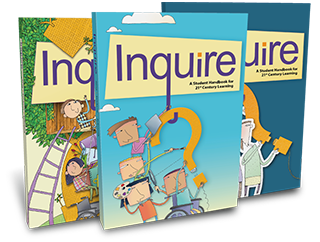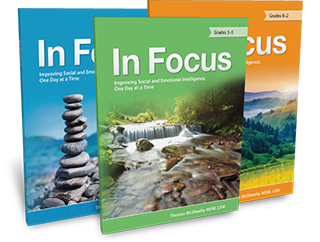Celebrating Media Literacy Week |

|
What's Inside?
|
Connecting Writing with Media LiteracyYou routinely connect writing with reading, but how often do you connect writing with media literacy? It's a symbiotic relationship. You teach students to write about different topics for different audiences and purposes. They can use the same skills to engage media about different topics for different audiences and purposes. Most writing teachers, though, wouldn’t consider themselves media-literacy coaches. They might not even know how to define media literacy: the ability to access, analyze, evaluate, and create communication in various media formats. The same critical-thinking skills you teach in the writing process can help your students evaluate media for truth, fairness, and bias—skills increasingly necessary for academic success and responsible citizenship. Likewise, developing media-literacy skills prepares students to ethically share ideas in writing. How can the writing process teach media literacy?Students learn that good writing takes time—prewriting, writing, revising, and editing. As the old saying goes, "Easy writing makes hard reading, and hard writing makes easy reading." So students learn to appreciate well-crafted ideas—and, equally importantly, dismiss shoddy ideas when media are slapped together. Thoughtful writers make thoughtful readers, listeners, and viewers. Let's look at each stage of the writing process to see how it can help you teach media literacy. PrewritingTo meet the specific demands of a writing task, students should first consider the communication situation—sender, message, medium, receiver, and context: 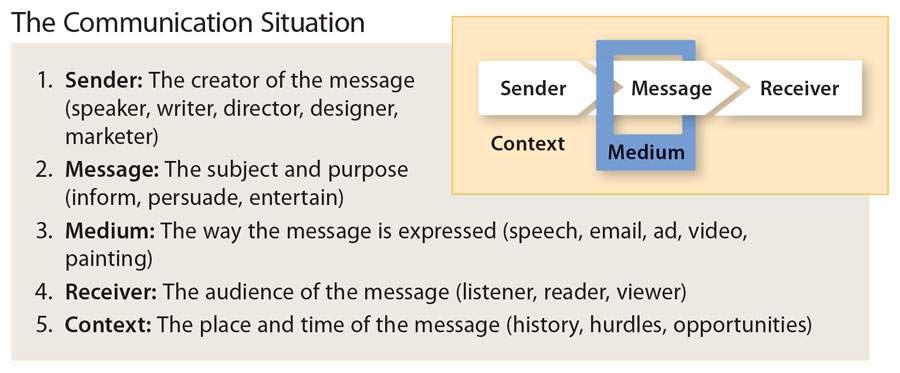
Students who can analyze the rhetorical situation for writing can also analyze the same situation for the media they consume. All media is constructed, so all students can learn to deconstruct it—breaking it into its parts, considering how they work, and evaluating them. This rhetorical awareness helps students use sources ethically and reject media that uses them unethically. This video can introduce the communication situation to your students: |
Handbooks for 21st Century Learning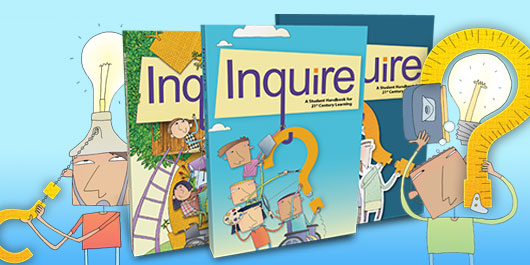
The Inquire series develops the deep thinking skills coveted by colleges and businesses. These cross-curricular learning guides cover 21st century skills, traditional study skills, the inquiry process, and project-based instruction. Both student and teacher editions are offered in print and online versions for all grade levels. Take a closer look at any level of Inquire, and sign up for free review copies. |
Lessons for Combating Fake News
“Truth, crushed to earth, shall rise again,” William Cullen Bryant exclaimed in his Civil War-era poem, “The Battlefield.” Nearly two centuries later, it feels like truth is yet again fighting an uphill battle. We live at a time when the Oxford Dictionary chooses post-truth as its word of the year. Misleading news stories litter our social-media feeds, and we struggle to distinguish credible sources from bogus ones. This swirl of misinformation fuels distrust of accurate news and enhances our own biases. If truth truly is to rise again, we need to equip our students (and ourselves) with media-literacy strategies for separating fact from fiction, real news from fake news. We also need to encourage students to speak up when they encounter shady stories to prevent their spread. The strategies in this post can help our students spot and stop fake news. Detecting Red Flags“Fake news” refers to intentionally false, misleading, or salacious stories masquerading as real news. Students are most likely to encounter fake news on social media, where misinformation can be shared widely and rapidly. In fact, in the lead-up to the 2016 presidential election, fake news stories received more engagement on Facebook than the top stories from mainstream news outlets. |

Provide step-by-step guidance to help students write effective narratives, explanations, arguments, and more. Students work through prewriting, writing, revising, and editing with activities, examples, models, and interactives. Want to try a unit? Just enter the Coupon Code FREETRIAL at checkout! |
Help Students Clear the Way for Critical ThinkingIn order to get students to think critically, you need to help them break through their mechanical thinking and manage their emotional thinking. What is mechanical thinking?When students think mechanically, their brains are just repeating looped recordings of thought without considering them. For example, students might have the mechanical thought, “I'm not good at math.” It just crops up in their brains whenever they look at a math problem. Often that little mechanical loop doesn't even relate to reality. Why do we think mechanically?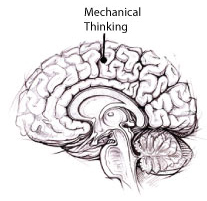
Mechanical thinking is useful for routine tasks like walking, riding a bike, keyboarding, driving, playing an instrument, and other activities that have become part of muscle memory. To learn any of these skills takes a lot of critical thinking, problem solving, and practice, but once the skill is learned, it is stored in the motor cortex at the top of the brain. Often a person can do something with great ease but can't explain how to do it to anyone else. The skill is no longer conscious. But to learn new skills, students need to think critically, using the prefrontal cortex at the front of the brain. How can students break through mechanical thinking?When students are thinking mechanically about a topic in school, they are treating it like a 'muscle-memory" subroutine instead of engaging the material in a new way. Most often, mechanical thoughts manifest themselves in statements that shut down possibility. You can teach students to recognize such statements, stop them, and replace them with questions that open up possibilities: |
Additional ResourcesEnglish Language Arts
 |

|
|
|
| Unsubscribe from this list. |
